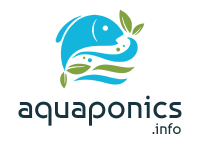DIY Aquaponics is gaining traction currently, especially with people that are very concerned with the quality of what they eat, and the way it is produced. It seems that aquaponics allows them to fully control these factors.
For people that hear the term and know little beyond that, it is another way to produce leafy greens, it conjures up images of expensive large greenhouses. Sometimes whole areas covered in them. This image is partly true in some instances, usually big businesses that are owned by similarly big companies.
DIY indoor aquaponics system
This is the one picture; the other is that of aquaponics systems created by individuals in their backyard or even indoors at their homes.
This is a movement that is ever-growing with people experimenting every day on an almost global scale. Naturally one can hardly expect people to do so without purpose. Ultimately, it seems the goal is to find the best way to grow good, healthy, chemical, and hormone-free food, and control the whole process while doing so.
Most people begin by doing this with a small Indoor aquaponics system DIY. This is normal since making a substantial cash outlay for a larger system whilst not knowing how to take care of its needs can be distressingly disastrous for plants and fish. The reason for such failure can be a number of reasons, all of which are related to knowledge. This knowledge can be gained either online from other aquaponists, or by personal experience, hopefully without too much cost.
DIY indoor aquaponics system requirements
An Indoor aquaponics system of the DIY type can range from something the size of an aquarium to substantially larger. All of them need a minimum of electricity and substantial sunlight. Should there be no sunlight available, then grow lights are the answer, and with today’s technology, these are also very energy frugal.
It is important to note that with such small systems it is very difficult to keep the ph. of the water on an even keel. The pH. of the water in the system is very important to the fish that populate it and may well kill them, so in small systems, it is a constant battle to stabilize it. This is not so in large 1,000 liter systems.

